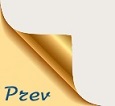G-d commands to sanctify firstborns to Him
Sanctify to Me every firstborn, every one that opens the womb among the children of Israel among man and among animals; it is Mine
Moses tells the people how to celebrate Passover
- It will come to pass that the Lord will bring you into the land of the Canaanites, the Hittites, the Amorites, the Hivvites, and the Jebusites, which He swore to your forefathers to give you a land flowing with milk and honey and you shall perform this service in this month.
- For seven days you shall eat unleavened cakes, and on the seventh day, there is a festival for the Lord.
- No leaven shall be seen of yours [in your possession], and no leavening shall be seen of yours throughout all of your borders.
- And you shall tell your son on that day, saying, "Because of this, the Lord did [this] for me when I went out of Egypt."
Moses tells the people about Tefillin
- And it shall be to you as a sign upon your hand and as a remembrance between your eyes, in order that the law of the Lord shall be in your mouth, for with a mighty hand the Lord took you out of Egypt.
- And you shall keep this statute at its appointed time, from year to year.
Moses tells the people about redeeming the Firstborns & Miscarriages of animals
- And it will come to pass when the Lord will bring you into the land of the Canaanites, as He swore to you and to your forefathers, and He has given it to you, that you shall give over to the Lord whatever opens the womb, and every miscarriage that opens the womb of an animal which will be yours, the males belong to the Lord. And every firstborn donkey you shall redeem with a lamb, and if you do not redeem [it], you shall decapitate it, and every firstborn of man among your sons, you shall redeem.
- And it will come to pass if your son asks you in the future, saying, "What is this?" you shall say to him, "With a mighty hand did the Lord take us out of Egypt, out of the house of bondage. And it came to pass when Pharaoh was too stubborn to let us out, the Lord slew every firstborn in the land of Egypt, both the firstborn of man and the firstborn of beast. Therefore, I slaughter [for a sacrifice] all males that open the womb, and every firstborn of my sons I will redeem.
Moses tells the people about Tefillin again
- And it shall be for a sign upon your hand and for ornaments between your eyes, for with a mighty hand did the Lord take us out of Egypt.
G-d leads the people around the land of the Philistines, appearing as a cloud and a pillar of fire
- When Pharaoh let the people go, G-d did not lead them by way of the land of the Philistines for it was near, because G-d said,
"Lest the people reconsider when they see war and return to Egypt" . - G-d led the people around by way of the desert to the Red Sea
- The children of Israel were armed when they went up out of Egypt.
- Moses took Joseph's bones with him
- They traveled from Succoth, and they encamped in Etham, at the edge of the desert.
- And the Lord went before them by day in a pillar of cloud to cause it to lead them on the way and at night in a pillar of fire to give them light, they thus could travel day and night.
- you shall redeem with a lamb He must give the lamb to a kohen. The firstborn donkey is permitted to be used, and the lamb is the ordinary property [i.e., unconsecrated] of the kohen. — [from Bech. 9a, b] [I.e., the lamb has no sanctity and may be used by the kohen.]
- you shall decapitate it He decapitates it with a cleaver from behind and kills it (Bech. 13a). He caused the kohen to lose his money [by neglecting to give him the redemption lamb]. Therefore, he must lose his own money [by decapitating his donkey]. — [from Bech. 10b]
- and every firstborn of man among your sons, you shall redeem His redemption [price] is established elsewhere (Num. 18:16) as five selas.
- “What is this?” The Torah spoke regarding four sons: the wicked one (Exod. 12:26), the one who does not understand to ask (Exod. 13:8), the one who asks [a] general [question], and the one who asks in a wise manner. — [from Yerushalmi, Pes. 10:4]
- and for ornaments between your eyes Heb. וּלְטוֹטָפֹת, tefillin.
- They traveled from Succoth on the second day, for on the first day they came from Rameses to Succoth.
Torah says that a remembrance must be worn but does not explain the what, when & how:
And it shall be to you as a sign upon your hand and as a remembrance between your eyes, in order that the law of the Lord shall be in your mouth, for with a mighty hand the Lord took you out of Egypt. And you shall bind them for a sign upon your hand, and they shall be as totafot between your eyes. And you shall write them upon the posts of your house, and on your gates.
Mishnah & Talmud explain the details but it is not clear if they come from Moses of from Rabbis (tannaim):
- Talmud is the written record of the oral tradition. Without the oral tradition some of the Torah’s laws would be incomprehensible. But it is not clear what laws came from the true oral tradition received by Moses, and what laws were written by Rabbis
Earliest known Tefillin:
- Talmud Tefillin were found in the Qumran caves dating from about the 1st century BCE. Various texts also indicate that Tefillin likely comes from before 4th century BCE. It seems that these tefillin looked different than the ones we see today (a small pouch, not a big block), and were worn differently as well.
Currently Tefillin is worn as follows:
- Boxes are created from leather, contain four scripts inside and must be worn according to specific instructions
- Tefillin are worn daily during morning prayer services, except Shabbat & Torah Holidays (which are considered a sign for remembering that G-d brought Israel out of Egypt - therefore no further sign in the form of the Tefillin is required.)
Importance of Tefillin:
- Tefillin contain passages from the Torah, hand written on parchment, just like a Torah scroll. It is therefore the most sacred ritual item an individual normally owns. Tefillin are worn on the arm near the heart, head and hand to indicate that all of a person's faculties should be bound in the services of G-d, Israel and Torah. The tefillin we wear are essentially the same as those worn by our ancestors generation after generation.
- In his Mishneh Torah, Maimonides concludes the laws of tefillin with the following exhortation: "The sanctity of tefillin is very great. As long as the tefillin are on the head and on the arm of a man, he is modest and God-fearing and will not be attracted by hilarity or idle talk, and will have no evil thoughts, but will devote all his thoughts to truth and righteousness;…”
Tefillin controversy:
- Karaites believe that the command is a figure of speech, requiring to remember G-d’s words but not to wear any physical signs
- Some people were Tefillin all day
- It is not clear which text must be in the Tefillin. Most people believe that it should be the ‘Shema’, but others think that it should be the Ten Commandments
- Prayers for Shaharit were written after Tefillin, so the practice of wearing Tefillin during that prayer is a later addition
- Some encourage women to wear Tefillin, others prohibit it. The Mishna records: "Women, slaves and minors are exempt from the recitation of Shema and from tefillin, but are obligated for the Amida Prayer, mezuza, and Grace after meals" (Berakhot 3:3). The Talmud states, "Mikhal the daughter of King Saul used to wear tefillin, and the sages did not protest" (Eruvin 96a). Conservative Judaism encourages women to wear tefillin.









